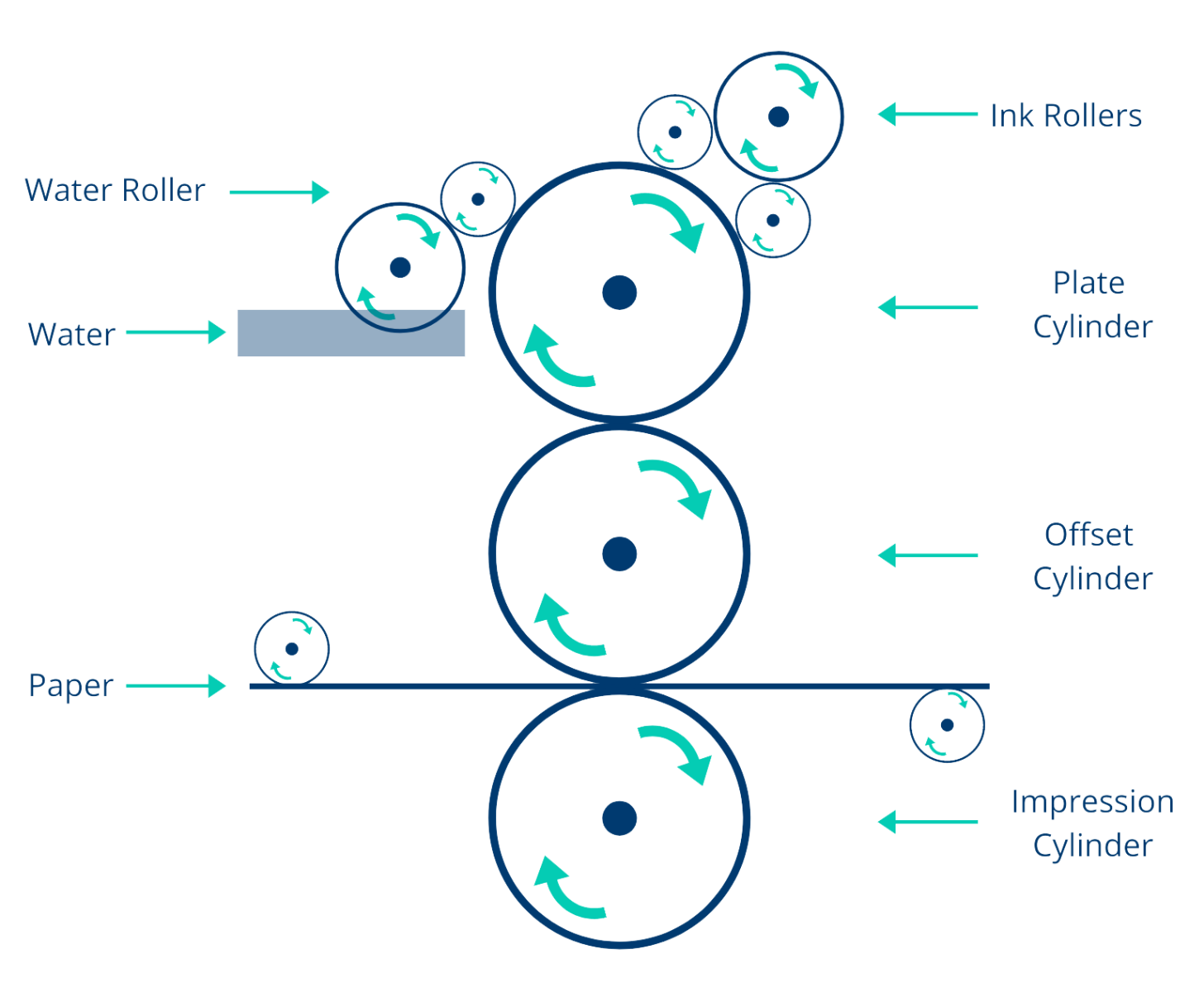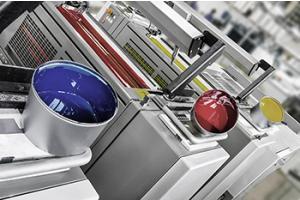The Background
Lithographic printing (also known as 'litho' or 'offset' printing is a method of printing where the image is transferred (offset) from a plate onto a rubber blanket and then onto the paper. The lithographic term refers to the part of the process which is based on the repulsion of oil and water. Plates are often made of metal (but can use a range of other materials), and the artwork image is etched onto it. Artwork will often be separated into four printing plates, each printing a different colour, which then combine to form what is known as a 'full colour print'. Extra plates can also be added in order to print specific colours, such as matching a company's Pantone reference.
The Process

- The inking and dampening systems deliver ink and water onto the plate cylinder.
- The plate cylinder then transfers the ink onto the offset cylinder.
- The print material is then pressed against the offset cylinder by the impression cylinder, transferring the ink onto the material.
- This process is then repeated with different plates to form the printed image.











